Explain why polymerisation of accrylonitrile is preferred under ationic polymerisation ,wheereas polymersation of vinylic monomers containing polymersation of vinylic monomers continingEDG is preferred under cation mechanism.
(b) Explain the polumerisation of buta-1,3-diene using different routes.
Acrylonitrile (CH2=CH=CN)ContainsEWG(−C≡N)Group which stabilises the carbanion intermediate ,Moreover ,cabianion intermediates are produced in both the chain-initiation and chain-propagation steps,hence polumerisation of acrylonitriles is preferred under anionic conditions.
(1)Chain-initiation step:
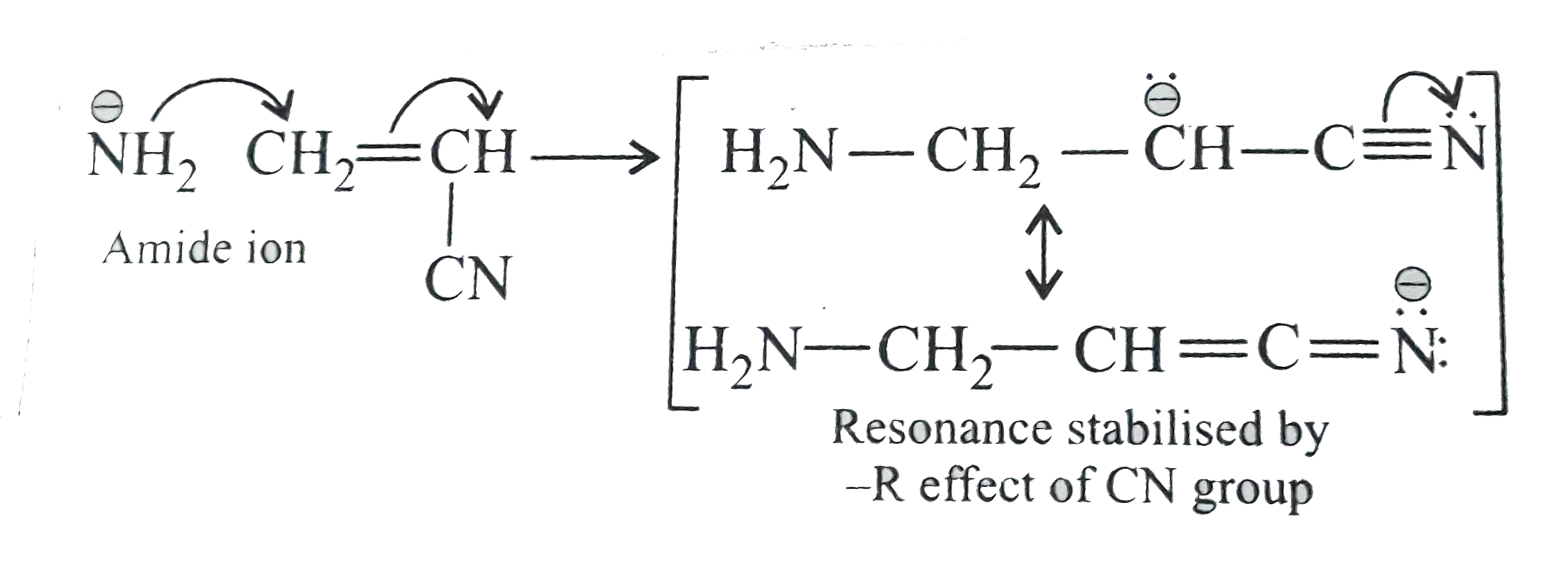
(2)Chain propagation step:
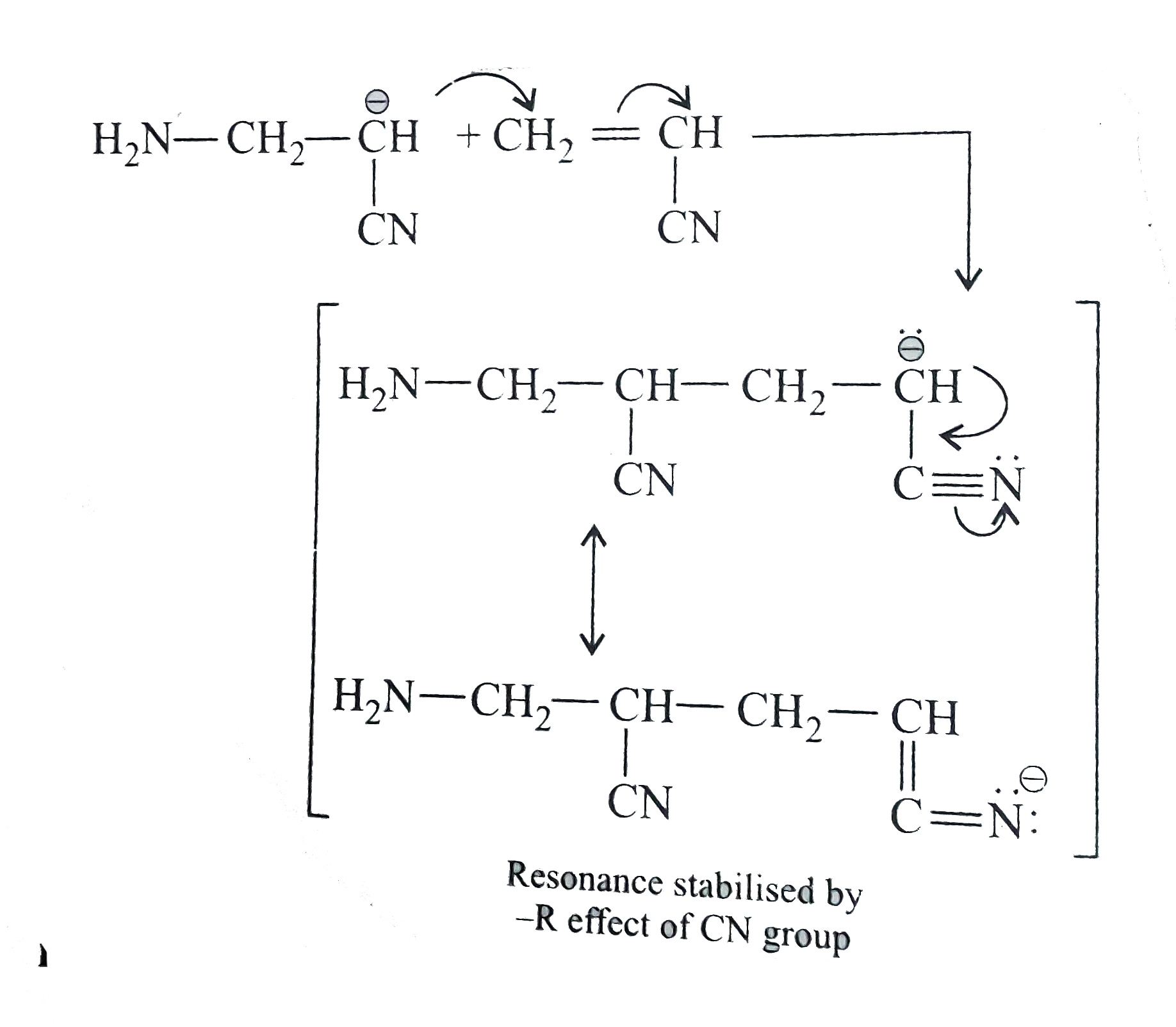
(ii)Cationic polumerisationof vinylic monomer containingEDGcationic polymerisation is carried out in hte presence of acids.It forms carbocation intermediate and is stabilised byEDGboth in chain-initiation and in chain -propagation steps.Hence polymersation is preferred under cations conditions.
(1)Chain-initiation step:
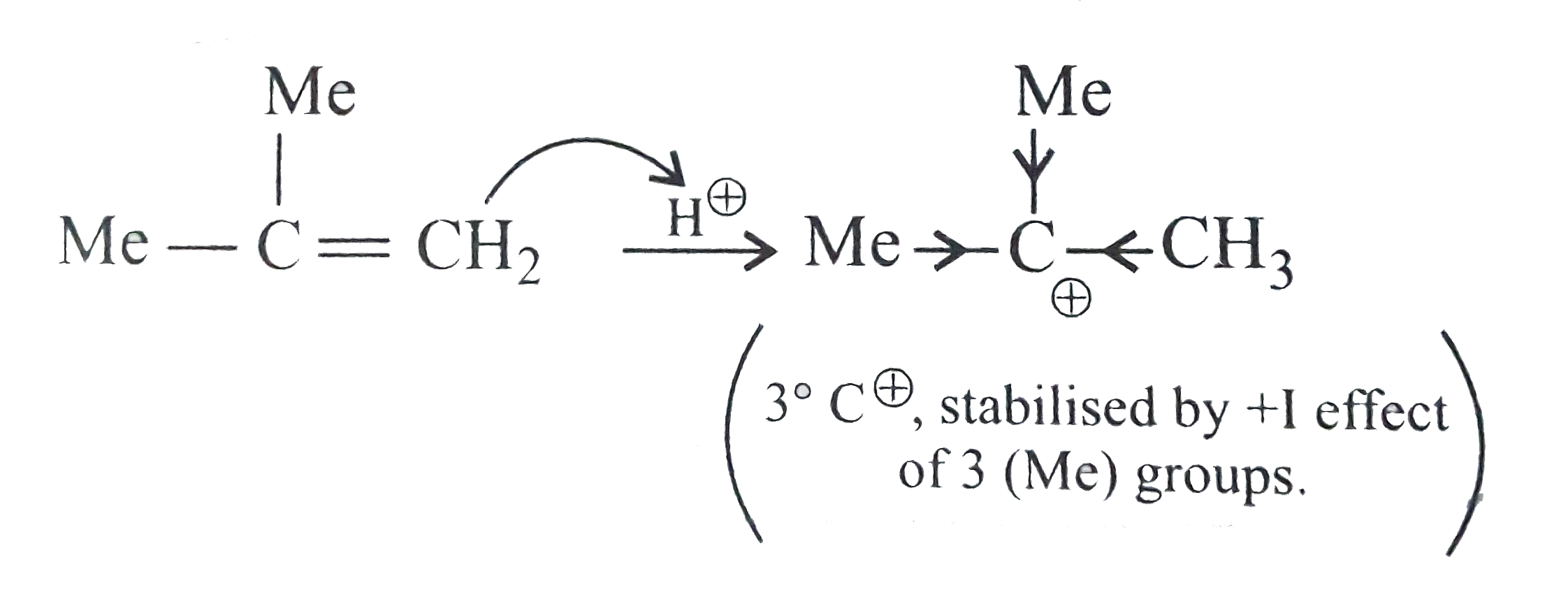
(2)Chain-propagation step:
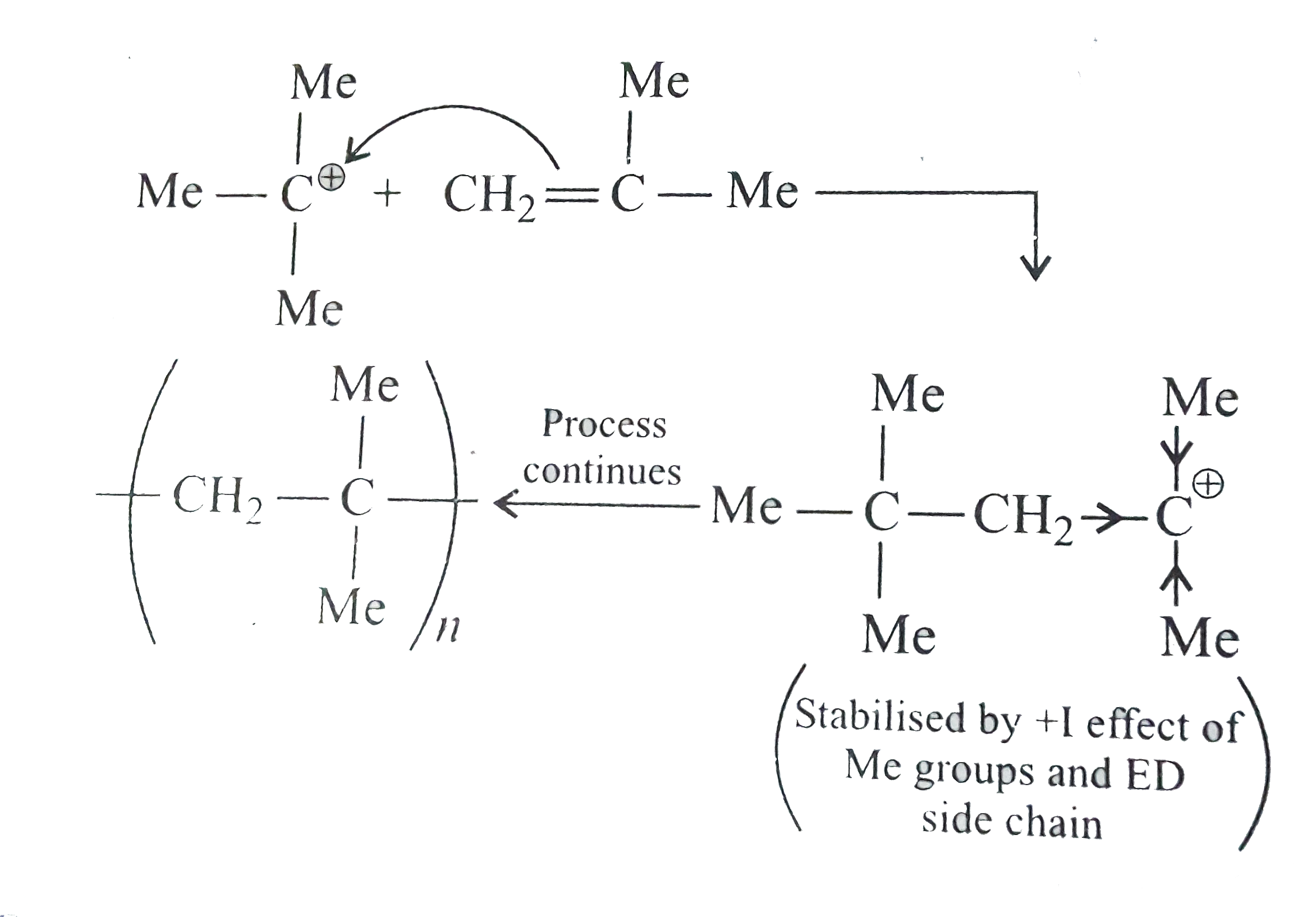
(b)Buta−1,3−diene is a conjugate diene which can be polymersation either by 1,4,−addition or by1,2−addition mechanism.
(i).1,4−Polymersation :It gives unbranced polymer.
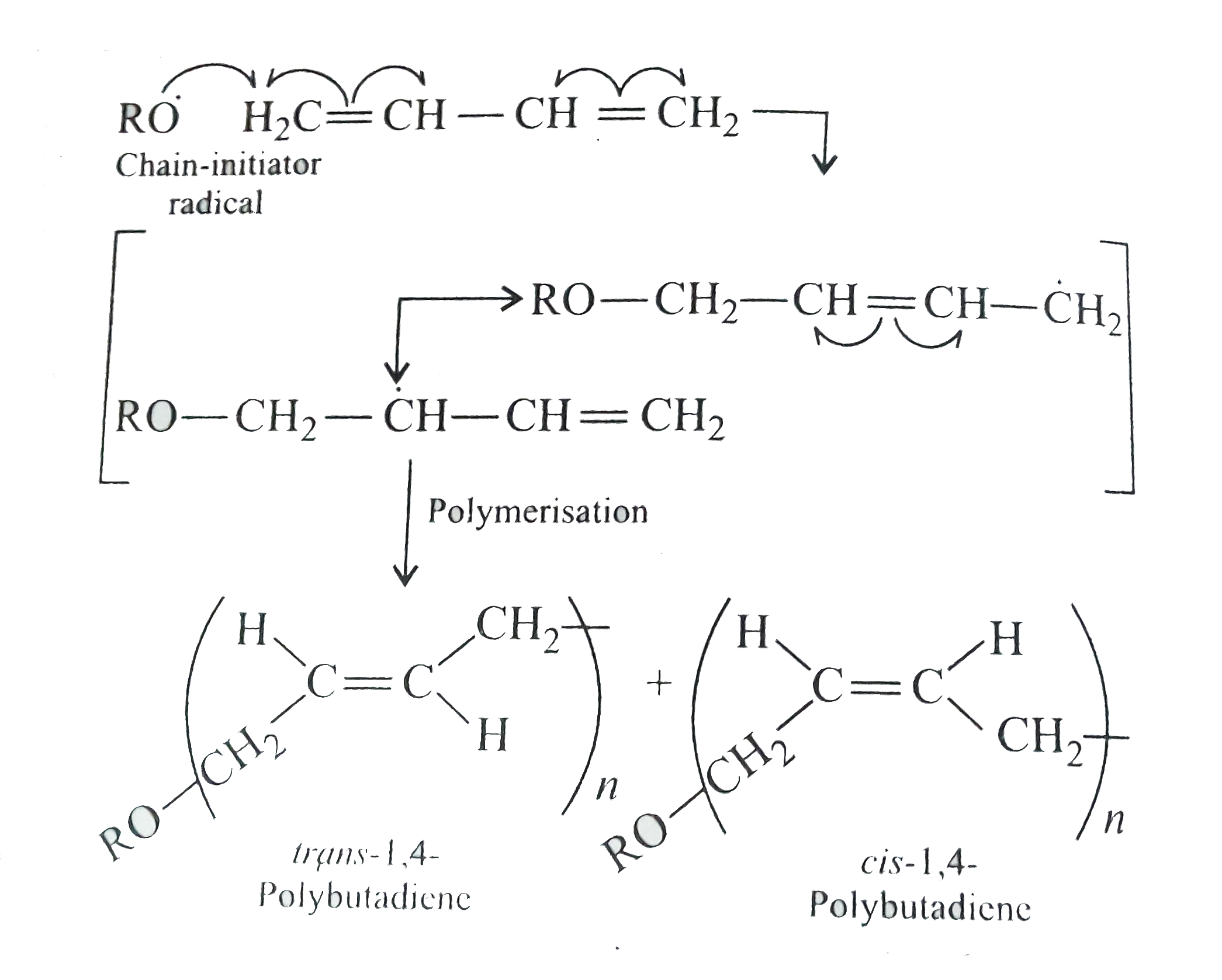
(ii)1,2-Polymersation:it gives branced polymer.
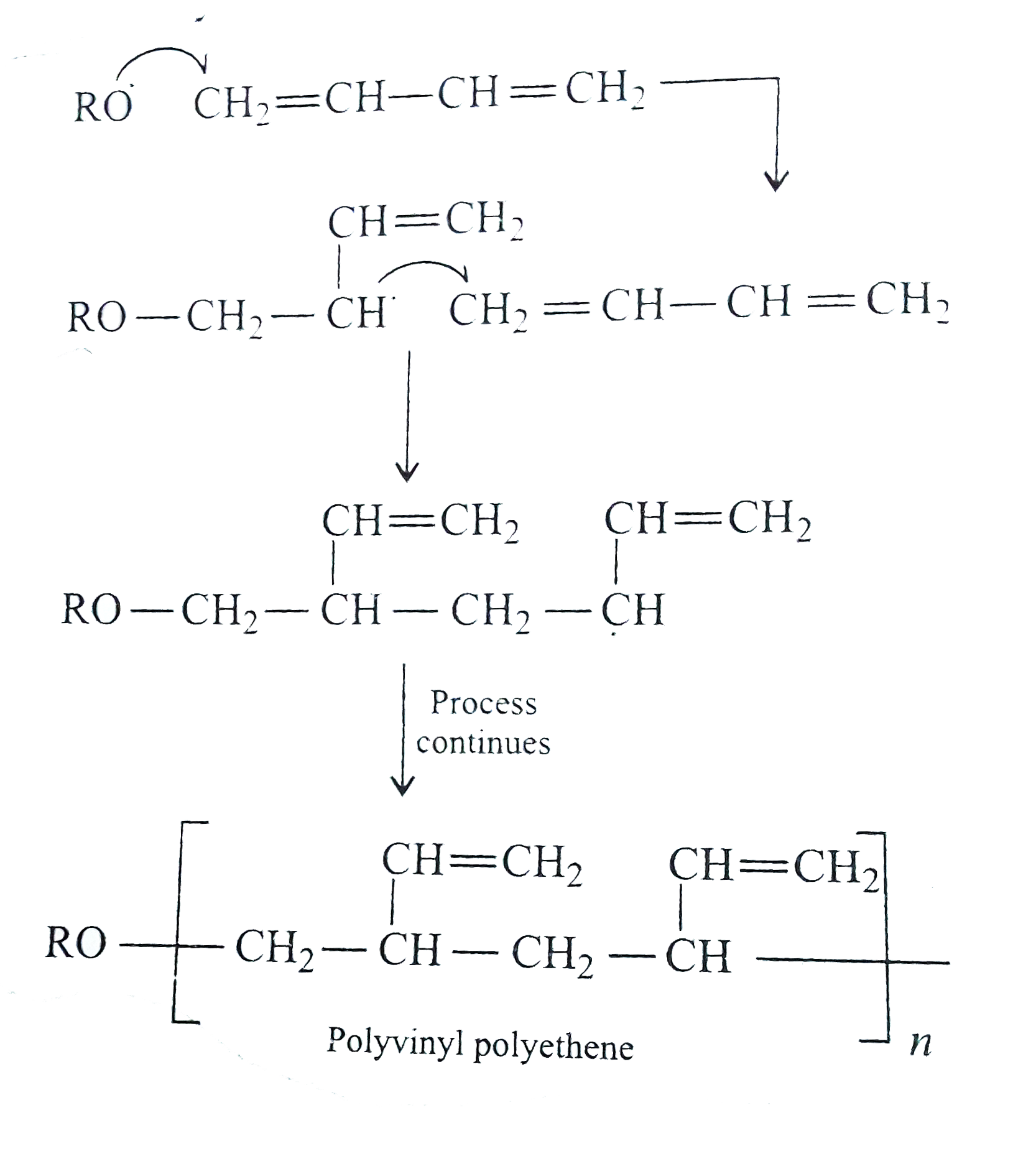
Topper's Solved these Questions
- SYNTHETIC AND NATURAL POLYMERSBOOK - CENGAGE CHEMISTRYCHAPTER - SYNTHETIC AND NATURAL POLYMERSEXERCISE - Exercises Concept Application
20 Videos
- SYNTHETIC AND NATURAL POLYMERSBOOK - CENGAGE CHEMISTRYCHAPTER - SYNTHETIC AND NATURAL POLYMERSEXERCISE - Exercises Linked Comprehension
30 Videos
- SYNTHETIC AND NATURAL POLYMERSBOOK - CENGAGE CHEMISTRYCHAPTER - SYNTHETIC AND NATURAL POLYMERSEXERCISE - Exercises Assertion Reasoning
10 Videos
- SURFACE CHEMISTRYBOOK - CENGAGE CHEMISTRYCHAPTER - SURFACE CHEMISTRYEXERCISE - Archives Subjective
2 Videos
Similar Questions
Knowledge Check
Assertion : Buta −1,3−diene is the monomer of Gutta Percha.
Reason: Gutta Percha is formed through cationic addition polymerisation.AIf both the assertion and reacons are true and reason is a true explanation of the assertion.BIf both the assertion and reasons are true but the reason is not the correct explanation of assertion.CIf the assertion is ture but reason is false.DIf assertion is false but reason is true.
Assertion (A) Olefinic monomers undergo addition polymerisation
Reason (R ) Polymerisation of vinyl chloride is initiated by peroixdes/persulphates
(a)Assertion and Reason both are correct statement But reason does not explain Assertion
(b)Assertion and Reason both are correct statements and Reason explains the Assertion.
(c)Both assertion and reason are wrong statements
(d)Assertion is correct statement and Reason is wrong statement
View SolutionA large numberof monomers (Simple molecules) combine together to form a larger molecule ( macro molecule) called as polymer. Each polymer is made up of a repeating structural unit. A polymer is said to be homopolymer if the structural unit is derived from one type of monomer molecules. if the repeating structural unit of a polymer is derived from more than one different types of monomers, the polymer is said to a copolymer. The homopolymers as well as copolymers may be formed by addition or condensation reactions. Alekenes and dienes polymerize by additions (Chain growth) mechanism involving carbocations, carbanions or free radical intermeidates. Dienes (Chloroprene) polymerise by 1, 4 addition mechanism to give cis or trans polymers. Natural rubber is, however, cis-polyisoprene. Natural rubber is quite soft and tacky but these properties can be improved by a process called vulcanization.
In contrast, bifunctional monomer molecules undergo condensation or step-growth polymerization. Polymers which can be heated and reshpaed as many times as desired are called thermoplastics (polyethene, polystyrene, PVC, teflon etc). While those which can be heated onoy once to give a particular shape are called thermosetting polymers (bakelite, melmac etc.)
Which of the following sets contain only copolymers?
View SolutionA large numberof monomers (Simple molecules) combine together to form a larger molecule ( macro molecule) called as polymer. Each polymer is made up of a repeating structural unit. A polymer is said to be homopolymer if the structural unit is derived from one type of monomer molecules. if the repeating structural unit of a polymer is derived from more than one different types of monomers, the polymer is said to a copolymer. The homopolymers as well as copolymers may be formed by addition or condensation reactions. Alekenes and dienes polymerize by additions (Chain growth) mechanism involving carbocations, carbanions or free radical intermeidates. Dienes (Chloroprene) polymerise by 1, 4 addition mechanism to give cis or trans polymers. Natural rubber is, however, cis-polyisoprene. Natural rubber is quite soft and tacky but these properties can be improved by a process called vulcanization.
In contrast, bifunctional monomer molecules undergo condensation or step-growth polymerization. Polymers which can be heated and reshpaed as many times as desired are called thermoplastics (polyethene, polystyrene, PVC, teflon etc). While those which can be heated onoy once to give a particular shape are called thermosetting polymers (bakelite, melmac etc.)
Which of the following sets contains only thermoplasters?
View SolutionA large number of monomers (simple molecules) combine together to form a larger molecule (macro molecule) called as polymer. Each polymer is made up of a repeating structural unit. A polymer is said to be homopolymer if the structural units is derived from one type of monomer molecules. If the repeating structural unit of a polymer is derived from more than one different types of monomers, the polymer is said to a copolymer. The homopolymers as well as copolymers may be formed by addition or condensation reactions. Alkenes and dienes polymerize by additions (chain growth) mechanism involving carbocations, carbanions or free radical intermediates. Dienes (chloroprene) polymerise by 1, 4 addition mechanism to give cis or trans polymers. Natural rubber is, however, cis-polyisoprene. Natural rubber is quit soft and tacky but these properties can be improved by a process called vulcanization. In contrast, bifunctional monomer molecules undergo condensation or step-growth polymerization. Polymers which can be heated and reshaped as many times as desired are called thermoplastics (polyethene, polystyrene, PVC, teflon etc). while those which can be heated only once to give a particular shape are called thermosetting polymers (bakelite, melmac etc).
Which of the following sets contain only copolymers?
View SolutionA large number of monomers (simple molecules) combine together to form a larger molecule (macro molecule) called as polymer. Each polymer is made up of a repeating structural unit. A polymer is said to be homopolymer if the structural units is derived from one type of monomer molecules. If the repeating structural unit of a polymer is derived from more than one different types of monomers, the polymer is said to a copolymer. The homopolymers as well as copolymers may be formed by addition or condensation reactions. Alkenes and dienes polymerize by additions (chain growth) mechanism involving carbocations, carbanions or free radical intermediates. Dienes (chloroprene) polymerise by 1, 4 addition mechanism to give cis or trans polymers. Natural rubber is, however, cis-polyisoprene. Natural rubber is quit soft and tacky but these properties can be improved by a process called vulcanization. In contrast, bifunctional monomer molecules undergo condensation or step-growth polymerization. Polymers which can be heated and reshaped as many times as desired are called thermoplastics (polyethene, polystyrene, PVC, teflon etc). while those which can be heated only once to give a particular shape are called thermosetting polymers (bakelite, melmac etc).
Which of the following sets contains only thermoplasters?
View Solution(a)Why is the purest monomer used in free radical polymerisation?
(b).How does the presence ofCl4orCBr4influence the course of vinylic free radical polymersation.
(c )what is the monomer of the polymer given below:

(d)Whydoesho≤develope∈nylons→ck∈gwhenadropofHClis added to it?
View SolutionExplain the following :
(a) Carbon tetrachloride is used as fire extinguisher.
(b) Use of chloroform as anaesthetic is decreasing.
(C) Chloroform is kept with a little ethyl alcohol in a dark brown coloured bottle.
(d) Iodoform gives precipitate with AgNO3 on heating while chloroform does not.
(E) Alkyl iodides become darken on standing in presence of light.
(f) A small amount of Nal or KI catalyses the hydrolysis of R-CI or the reaction,
R−CI+R'ONa→R−O−R'+NaCI
(g) while preparing alkyl halides from alkanes ,dry gaseous hydrohalgen acids are used instead of their aqueous solutions.
(h) Hydrogen atom of chloroform is definitely acidic in nature.
(i) Vinyl halide is less reactive while allyl halide is more reactive than alkyl halides. or
Vinyl chloride does not gives SN reaction but allyl chloride gives.
(j) Why is free radical halogenation of alkanes is seldom used for laboratory preparation of alkyl halides ? Under what condition good yields of monosubstituted chloride can be obtained ?
(K) What effect should the following resonance of vinyl chloride have on its dipole moment?
H2C−δ+CH−δ−CI⇔H2δ−C−CH=δ+CI
(I) 2-Chloro-3-methylbutane on treatment with alcoholic potash gives2- methylbut-2-ene as the major product.
(m) Compare the rates of (i) SN1and(iii)SN2 reactions of allyl chloride and n-propyl chloride.
(N) When CH3CH=CHCH2CI reacts with alcoholic potassium cyanide, a mixture of isomeric product is obtained.
(O) the formation of the products giving the structures of the intermediates.
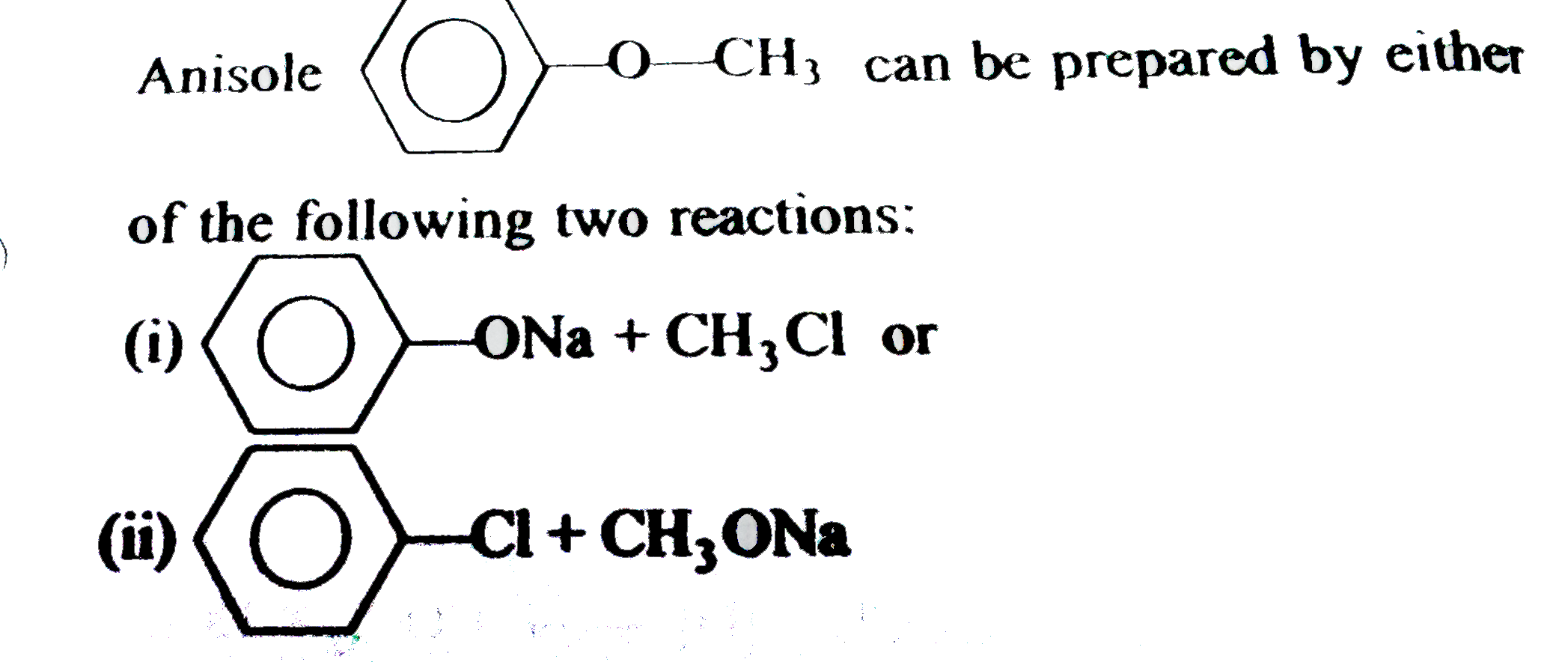
(q) Arrange C6H5CH2CH2CI, C6H5CHCICH3 and C6H5CH=CHCI in the order of their decreasing activities with alcoholic silver nitrate.
(r) Arrange CH3CH2Br,C6H5 and C6H5CH2Br in order of their decreasing activities with KCN.
(s) Chlorobenzene is less reactive as compared to ethyl chloride.
View Solution
